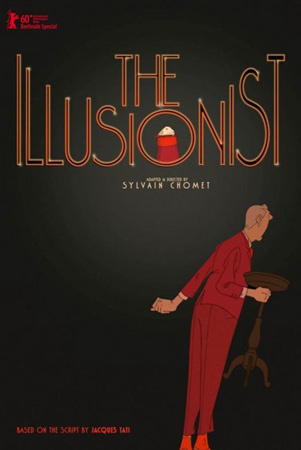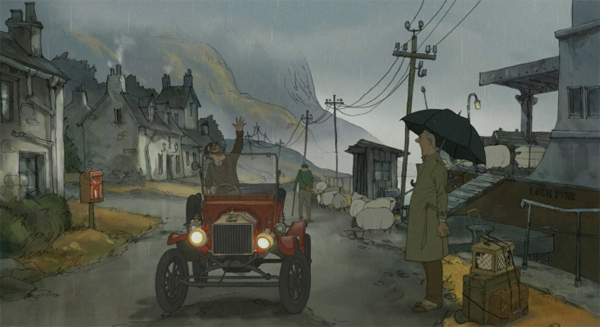Sylvain Chomet (Triplets of Bellville) executed the animation in The Illusionist so elegantly and brilliantly. I stood in line for an hour and thirty minutes to see this TIFF film, because I knew that it would be stunning. Like Triplets of Bellville, The Illusionist is pretty silent in dialogue; the characters occasionally speak French or Gaelic (I have no knowledge of either). The tone of The Illusionist is melancholic and poignant unlike the whimsical and surreal spirit of Triplets of Bellville. The Illusionist almost reduced me to tears because of its tone and artistic vision.
Based on French actor Jacques Tati’s relationship with his daughter and Tati’s unproduced screenplay, The Illusionist presents an animated version of Tati going through times of change as a magician and a fan, a young girl, who transforms Tati’s life forever. They meet in Scotland in the 1950’s. Tati tries to keep his magical spirit alive as long as possible to this girl through means of performing at bars, small theatres, window displays, and at other degrading places.
Because there is so little dialogue, the animators immaculately expressed subtle and exaggerated gestures of figures such as the frivolous and audacious mannerisms of rock bands and the rigid stance of Tati. He and his fan begin to dissociate themselves after realizing new and different things are happening. For Tati, it’s his need for money. For his fan, it’s her awareness of society and conventions. Tati’s story is sorrowful, but charming.
I adored the animators’ use of colours. The Illusionist was hand-drawn, which is rare in this era of 3-D computer digitized animations. The different tones of colours were delicate, and many of the scenes had specific muted colour schemes. The landscapes and costume design featured in this film were breathtaking. The Illusionist is a visual masterpiece and offers a nice break from the loud world to the audience.
9 out 10


